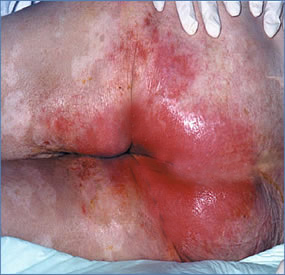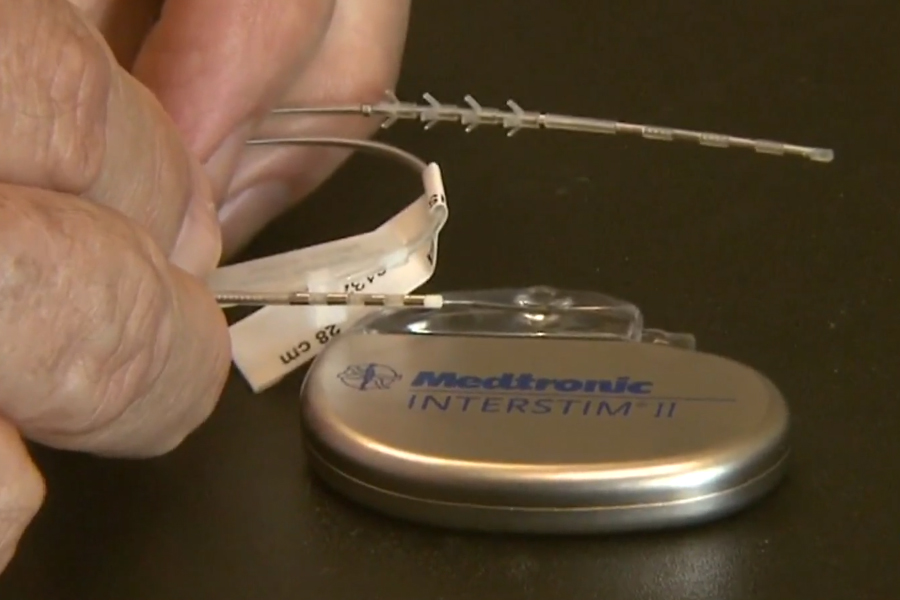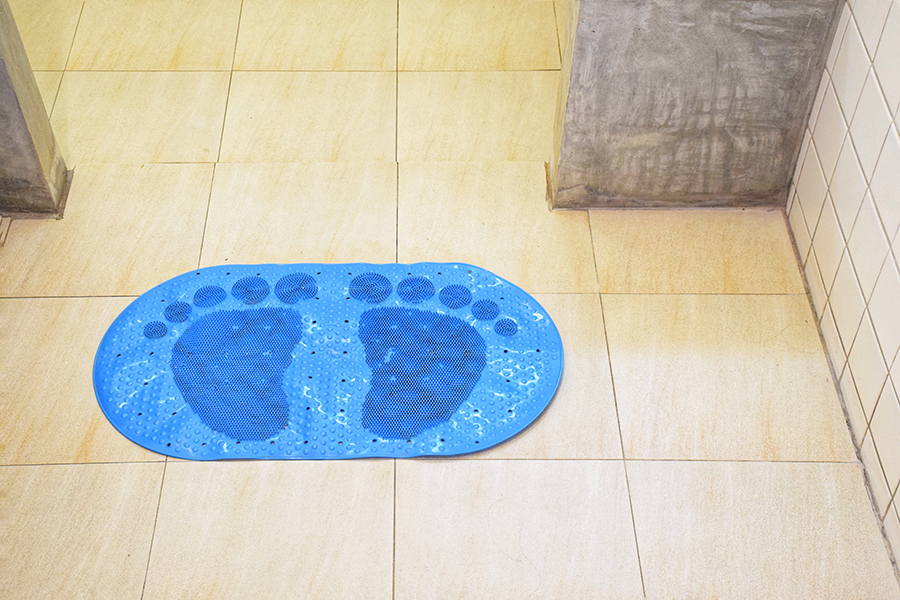Incontinence-associated dermatitis (IAD) – commonly known as “diaper rash” – is the clinical manifestation of moisture-related skin damage. IAD is a common complication for individuals with fecal and/or urinary incontinence. It occurs when moisture from urine or stool is chronically in contact with the skin.
Among hospitalized patients, the prevalence rate has been found to be as high as 27% and a 2012 study showed that 22.8% of nursing home residents with incontinence had IAD at the time of admission. IAD is clinically and pathologically distinct from pressure ulcers.
Indications of IAD vs. Pressure Ulcer:
Exposure to skin surface irritants may be a predictor and the condition, in turn, may be a factor in pressure ulcer risk because skin integrity is compromised.
Causes of IAD
IAD stems from the effects of urine, stool, and heavy, wet incontinence products on the skin. With prolonged contact with the skin, damage can occur. Urine on the skin alters the skin’s normal, healthy bacteria making it more susceptible to friction and erosion. Fecal incontinence leads to active fecal enzymes on the skin which contributes to skin damage and increases risk of a secondary infection. In addition, wet skin has a lower temperature and less blood flow than dry skin. When wet skin is under pressure from a soaked absorbent product, skin erosion can occur.
When using absorbent products like briefs or disposable underwear, it is beneficial to the skin if those products are changed in a timely manner. Poorer-quality disposable incontinence products leave the wet surface in contact with the skin, while better-quality ones have multiple layers containing absorbent polymers. The polymers are designed to wick moisture away from skin and trap it directly into the core of the product.
IAD Prevention and Care
Implementation of a structured and consistently-applied IAD management program is an effective means for prevention and care. Correct diagnosis and proper treatment are also crucial for the management of IAD.
Treatment goals – including protecting the skin from further exposure to irritants, establishing a healing environment and eradicating any cutaneous infection – can be accomplished with proper product use.
Incontinence Level and Functional Status of the Patient
It is necessary to correctly define the level of incontinence and functional status of the patient.
- Is the level of incontinence light, moderate or heavy?
- Is the patient able to move to the bathroom on their own, with help, or not at all? Or are they in transition between these?
Defining the patient’s level of incontinence and degree of mobility allows the caregiver to better determine the individual’s product needs.
Appropriate Absorbent Product Use
An optimal healing environment can be created through the use of proper incontinence products. A poor quality incontinence product or the misuse of an incontinence product can be a leading contributor to IAD. However, using appropriate incontinence products correctly will aid in the prevention and care of IAD.
- Product Size: It is imperative that individuals use incontinence products that fit and serve their needs properly. Fit can be determined by measuring or by trial and error. If a properly sized protective underwear or brief is used and changed after use, the patient is more likely to remain dry.
- Frequency of Changes: The more incontinent an individual is, the more likely they are to need incontinence products. The most difficult cases require briefs/adult diapers and the help of a caregiver. Prompt attention to regular changes of soiled incontinence products will assist in the prevention of skin erosion.
Shield HealthCare | Medical Supplies For Care At Home Since 1957























